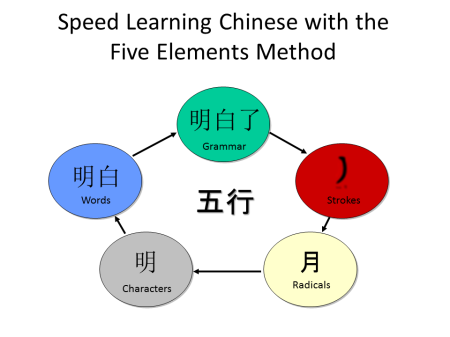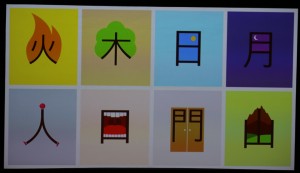Update 11-29-2023: Use AI to create graded Readers in Seconds
I have met many people who became fluent in speaking Chinese in 6 months. Chinese does not have very complex grammar rules such as the slavic languages. It was also quite easy for myself. It took me longer to become fluent in French and I gave up on Russian at some point, because of the complex grammar. Benny Lewis, who is a well-known polyglot and blogger on rapid language acquisition achieved an okay fluency even in three months – see his blog. Benny Lewis also wrote an excellent bestselling book about his process and tactics of rapid language acquistion. Fluent in 3 Months: How Anyone at Any Age Can Learn to Speak Any Language from Anywhere in the World.
What is much more challenging is to learn to read. This is not only a challenge for foreigners but also for the Chinese as well. Especially Chinese growing up outside chinese speaking countries find this particular difficult. It takes the first four years in school for chinese children to learn to read and write their first 1000 characters! This is not a fun process because it is mainly through continuous rather boring rote learning.
I found a way to learn to read the first 950 most important characters in 2 months and even had a lot of fun with it. All in all it took me just under 32 hours of my time. Now I am reading my first Chinese Book without consulting a dictionary . Actually I could have even done it in much less than 32 hours. As I am travelling a lot I used my iPhone mostly where I only type with one finger. On my laptop where I can use my ten fingers I am of course much faster. Usually I spent around 3-5 minutes to work on my course and I have done so several times a day. When I wait for the train, when I am in the train, when I wait for the plane, when I am in the plane, when I have a short coffee brake, when I am in the bathroom, when I wake up or before I go to sleep. You will be surprised how many 3-5 minutes slots you can find each day which I didn’t noticed before. I done all this while having a 120% job, a family and a few days a week when I look after the children and the household while my wife is on a business trip.
I only had a slight advantage as I knew still a few (less than 100) of the most important characters from my Chinese Studies at University 20 years ago. In 2014 I also had picked up frequency lists on the internet and tried out the books “Remembering Simplified Hanzi: Book 1, How Not to Forget the Meaning and Writing of Chinese Characters” by James Heisig and Timothy Richardson and the beautiful book on Chinese Characters “Chineasy: The New Way to Read Chinese
” by Shaolan, “Turbo Chinese (English Edition)
” by Saurabh Sharma and the well known Tuttle Learning Chinese Characters: A Revolutionary New Way to Learn and Remember the 800 Most Basic Chinese Characters
. I had no success with these books because by the time I started to learn the 1000 most important characters I had forgotten almost all of them.
To sum it up even if you have never learned any Chinese characters before you would still need roughly the same net time as it took myself. But what could differ is the period of time. Instead of 2 months maybe it will take you two to four weeks longer. It all depends on the amount of characters you can learn per day and the frequency.
So what was the method I used to finally succeed with? I signed up for the course “Chinese words spoken by frequency 0-1000” by Ben Whately on Memrise. Memrise uses the state of the art of the latest in neurosciences and learning research. It uses the right spaced repetitions, learning chunks, social learning methodologies, reward system and mnemonics to keep learners engaged. And on top of all it is free.
The course is broken down in 136 levels. Each level contains maximum 15 words. In the odd numbered levels you will learn the characters and their meaning in English and in the even numbered levels you will learn the pronounciation in pinyin and the meaning in English.
When you start learning you will learn around 5 characters per round until you completed the level. Then the pronounciation will be trained in rounds of 5. You can stop anytime and save where you have left of. Each time you get it right you will receive a number of points. This instills some competition as memrise will show you how you compare to other learners in the same course and where you rank. As I am a competitive person this was very motivating.
Additionally in both levels an audio pronounciation of the character or pinyin (pronounciation) that you are currently learning will be given. You will also have various ways to reply. Sometimes you need to select from a list similar to multiple choice or you need to type it directly into a text box. The system will show you the character and ask for the English word or show you the English word and ask for the character or the pinyin.
But this is not all. For each new word that you learn you can see how other people used mnemonics to learn and retain these words. This can be stories, pictures with text or links to useful resources or sentences where the character is used in, etc. If none of these are suited for your need you can create your own mnemonics so called mems.
Memrise was founded by the Memory Grandmaster Ed Cooke who taught Joshua Foer to become the US memory champion and Greg Detra a PhD at Princeton University neurosciences.
Also Joshua Foer used Memrise to study a new language in just 22 hours. http://www.theguardian.com/education/2012/nov/09/learn-language-in-three-months
My mission for 2015 is to help you overcome the first threshold to start to read Chinese. Once you start reading you will constantly add often without really noticing it more and more characters and vocabulary to your memory. To do that I will add small excercises for each levels of the memrise course over the next months.
Reading Exercise 1 Level 1 for the Course: “Chinese words spoken by frequency 0-1000” by Ben Whately on Memrise
These are the first 15 Characters/Words you will learn in Level 1. 的 我 你 是 了 不 在 他 我们 好 有 这 就 会
Before you do the below reading exercise you should first learn these words in the memrise course.
I will use these words from level 1 to form small sentences or fragments of it below:
这 是 zhe4 shi4 this is
这 是 我 的 zhe4 shi4 wo3 de5 this is mine
不 是 bu4 shi4 is not
是 不 是 你 的 shi4 bu4 shi4 ni3 de5 is this yours
不, 不 是 , 这 是 他 的 bu4, bu4 shi4, zhe4 shi4 ta1 de5 no, it is not, this is his
是 的 shi4 de5 yes it is
你 好 ni3 hao3 hello
你 有 ni3 hao3 you have
我 有 wo3 you3 I have
我们 有 wo3 men5 you3 we have
我 会 了 wo3 hui4 le5 I know how to do it (now)
我们 不 会 wo3 men5 bu4 hui4 we don’t know how to
我 在 wo3 zai4 I am in/at
我 不 在 wo3 bu4 zai4 I am not in/at
我们 在 他 的 wo3 men2 zai4 ta1 de5 we are at/in his….
就 是 jiu4 shi4 exactly (this word you will actually learn in later level in memrise
好 不 好 hao3 bu4 hao3 alright? or okay?
不 好 bu4 hao3 not good
我 是 不 是 你 的 wo3 shi4 bu4 shi4 ni3 de5 I am not your
Now over to you – try to come up with new combinations. And if you enjoyed the exercise may I ask you for a small favour to share your new combination in the comment section below the post. Thank you.
Another way to boost your chinese readings skills is to start to learn the first 100 most important radicals. These are the small components of a character and help you understand the meaning of the characters much better. I have developped a mnemonic system to make it quite easy and rapid for you. Please see The Fastest And Easiest Way To Learn Chinese Characters.
The best book to read after the course on memrise?
The easiest book to read after the memrise course is The Secret Garden: Mandarin Companion Graded Readers: Level 1, Simplified Chinese Edition. It is so far the best way to start to use your new character and word skills. I was able to recognize 98% of the characters. As I am reading the book on Kindle I can click on the underlined characters that I see for the first time and will be directed to a word list where the pinyin and English translation of the character or composite characters will be given. I am 21% into the book after just one day and I consulted this word list twice so far and basically it was only to check if I had grasped the meaning already of the new characters while I was reading the sentence. I haven’t yet red the other Level 1 graded readers book of the series but I would assume this to be a similar experience. You can a look inside the book here or download a sample in the kindle store. It is my first book that I can just read without consulting a dictionary and it feels very similar like reading any book in a language that I am totally familiar with: No big effort, no headache, no drag of energy, just fun.
What is the first book I am reading? A very good start to practice your new reading skills after your memrise course is by Marina Chan: First Chinese Reader for Beginners Bilingual for Speakers of English (Graded Chinese Reader Book 1). I am reading it on the Kindle. You can download a sample version first before you buy. The sample version convinced me to buy it and practice my reading skills. You can also take a look inside the book.
There are very few characters in the text that haven’t made it in the 1000 most frequently used words in Chinese. The 1000 words are based on the analysis of Chinese Film Subtitles. Researcher have confirmed that these subtitles match the actual most common words used by the population in China. I think this is no surprise as the film reflects the current vocabulary and in return as film and TV is the most consumed media in China influences back on the use of vacabulary in daily life. If you want to know about the research follow this link.
I can read between 90%-95% of the text in the book immediately. Some of the words I can guess through the context. But of course there are a few that are new. As an example the words for the different colors or words regarding touristic items. I guess in daily life they do not talk a lot about colours or hotels.
At the beginning of each chapter Marina Chan provides a list of characters, the pronounciation in pinyin and the English word for it. Additionally below every sentence in Chinese Characters there is also the pinyin. The translation of each of the sentences is provided at the end of the chapter.
Let’s take the first chapter of the book. From the 90 characters used only 9 were new. So most of the new words you would already be able to read all or at least a part of it. So some of them you could guess out of the context of the sentence. Being at this level it is so much easier to read than if you need to stop every second word to consult the dictioniary.
New words in chapter 1 that are not in the 1000 frequent word list in memrise are:
公园 gong1 yuan2 park – the second character yuan2 is not in the 1000.
商店 shang1 dian4 shop – the first character shang1 did not make in the top 1000, dian4 did
星級 xing1 ji2 – means star – used to say how many stars a hotel has. The second character ji2 is not in the 1000.
酒店 jiu3 dian4 hotel – both characters are in the top 1000, only the combination for the word hotel is not. So you can read the characters but might miss the meaning when combined.
文本 wen2 ben3 text – the first character wen2 is not in the 1000.
桌子 zhuo1 zi5 table – the first character zhuo1 is not part of the top 1000.
窗口 chuang1 kou3 window – the first character chuang1 did not make it into the 1000.
笔记本 bi3 ji4 ben3 notebook – all characters are in the top 1000, only the combination for the word notebook is not – one could guess the word out of the meaning of the individual characters
绿 lv4 green
自行車 zi4 xing2 che1 bike – all characters are known, only the combination to form the word bike is not – also here one could almost guess it from the individual characters used
蓝 lan2 blue
鼻子 bi2 zi2 nose – the first character bi2 is not in the 1000 words list.
I have found a newspaper for the intermediate level in Chinese. It is a dedicated section in the online edition of Global Times called Target Chinese. http://language.globaltimes.cn/category/for-intermediate/target-chinese/. So far I can understand between 70-80% of it. I still need a dictionary to look up missing words.
To read your first book of the mandarin companion series – vocabulary:
http://hskhsk.pythonanywhere.com/mandcomp
On Skritter you can find the vocabulary of the series:
http://blog2.skritter.com/2014/02/mandarin-companion-guided-readers-for.html?m=1



